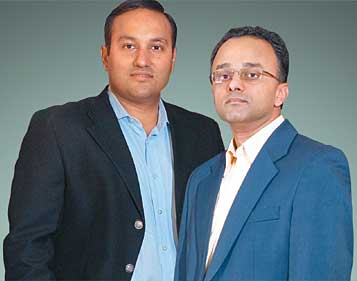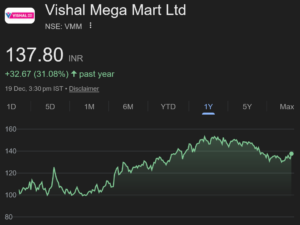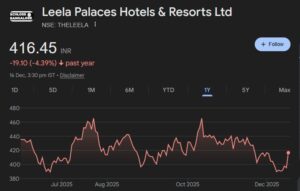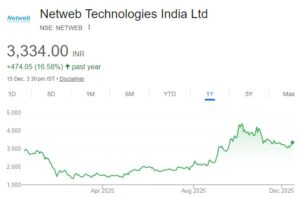
If you are looking for a model portfolio where stocks are picked as per a specific process, you have to check the portfolios of PIPE (Private Investment in Public Equity) Funds.
Some leading PIPE funds in India are Pulak Chandra Prasad’s Nalanda Capital, Sumir Chadha’s Westbridge Capital/ Jwalamukhi Holdings, Brahmal Vasudevan’s Creador Capital/ Idria, Renuka Ramnath’s Multiples Equity etc.
The portfolios of each of these PIPE funds is constructed after complete due diligence and after paying proper attention to all aspects of fundamentals, management quality, size of opportunity, valuations etc of the stock.
No wonder that these funds have given their lucky investors humongous returns over the years.
In the latest issue of Outlook Business, Sumir Chadha of Westbridge Capital/ Jwalamukhi has given important pointers of the fund’s investment technique. He has also discussed the Fund’s favourite holdings at length.
India offers a massive opportunity to find stocks:
India has a huge number of listed companies – over 4,000 – which means there is a massive opportunity to find good stocks. In other countries you don’t find this – in Brazil, there may be 500 listed companies, in Indonesia, it’s a couple of hundred. In India, for historical reasons, it is easy to get listed and we don’t have Sarbanes-Oxley and all that stuff that inhibits promoters from coming to the public market, like in the US.
Indian entrepreneurs are among the best globally:
Indian entrepreneurs are among the best globally because the truth is that it is so difficult to build a company in India. Being an Indian entrepreneur is like being an Ethiopian runner. The Ethiopian runners are really fast as their countries are very high above sea level, so there is very low oxygen. They are used to running on very low oxygen. That is one of the reasons Ethiopians are one of the world’s best runners. When they come to sea level and they are running they are killing every-one else because suddenly for them it is like running down. It is easy. In the same way, Indian entrepreneurs are used to such tough conditions in running a business. Every distributor is trying to squeeze you, everyone is negotiating with you. They all make it through that. I would say the good ones stay grounded, though there are the stereotypical flashy entrepreneurs as well. But we like entrepreneurs who are down-to-earth, stable and uphold middle class values. That is, sort of, what we find works in the long term.
The volatility in Indian markets is a big advantage because stocks can be bought very cheap and sold very high:
The Indian market is highly volatile. If you are a patient long-term investor, it actually works to your advantage. Because when things get depressed, they get so depressed that there arises a great opportunity to buy. And when they get euphoric, they get so euphoric and that is a good time to sell.
We look at volatility as our friend. Say tomorrow there is a sharp market downturn, we would love it. We have a lot of uncalled capital and cash. We would just start buying in our own names. When things get too hot we start exiting, if things get cold we use that as an opportunity to buy a lot. That is how we manage our own risk.
High-Quality mid-caps that are not actively traded make the best investments:
We like to focus on high quality mid-caps and there are a lot of them in India.
We love stocks that are not actively traded as they tend to be mispriced. We usually buy a chunk, typically 5-25%, in a listed entity with a long-term view of the promoter and the company.
For example, four years back, we had bought shares of Astral Poly Technik. When we bought a 12% stake in the company it had a Rs. 300 crore market cap and was hardly traded. Today, it has a 15,000 crore market cap. We sold half of our stake last year with a fantastic gain.
Hold stocks for the long-term and, if possible, for forever:
Long term can be very long or short depending upon the situation. But, generally, we take a five-to 10-year view. The way our current fund works is that, unlike a private equity fund, it is an ever growing fund. So, in many cases, we may end up hold something for 20 or 30 years. Some of our companies we may never sell. So, our fund is designed to be a little bit more like the wealthy families in India, where if you are investing your own money, just leave it there, you don’t have to sell. But some-times, we may sell very quickly if a stock runs up a lot in a very short period. We sell because in a public market there is always the opportunity to buy it cheaper. Hence, unlike a PE fund, we enjoy a lot more flexibility and that is a huge advantage.
What to look for in companies -overarching theme in the portfolio:
We look for high quality franchisee businesses that can generate superior return on capital over the long term. For us, that means companies with unfair advantages. Typically, we look for a very strong brand with a great reputation, a very strong distribution network, the type of things that make it very hard for a competitor to come in and eat their lunch.
The overarching theme is to invest in companies with long-term competitive and unfair advantages that arc very hard to replicate. That is a basic theme and cuts across industries. So we look for some edge.
Have a concentrated portfolio. Be very selective in your investment:
We have a very concentrated portfolio, a really small number of high quality companies. Our top 12 companies account for about 75% of our asset value. So, we don’t hold a huge number of investments. We are not afraid to put a lot of money into these companies because we believe in them. Or, if we don’t believe in them we don’t invest. We are not like a mutual fund in India that will typically own 80 stocks in the portfolio. We find that a riskier approach. We don’t want 80. We want the top 10 or 15, so we are really choosy. In India, over the past 16 years we have invested in 200 companies. We invested in many of the companies when they were small and we were on the board. Now they are listed. We know either the promoters or the board members pretty well from many years. Also, before investing, we do the usual things: a background check, send an investigative firm to check on various things, and our own calls or references. We spend a lot of time with them, and we either get comfortable or we don’t. Any whiff of promoter risk and we walk away.
Have an exit strategy in place:
If prices turn too steep, we cash out. We sold quite a lot of stuff, million dollars worth of stocks, in the past three quarters. So, we have exited quite a bit. If things keep going up we will keep exiting. In mid-caps, in a bear market there are no buyers and that is good because we are the buyers who get these stocks at a discount. In a bull market, there are plenty of takers. You should see how many calls we get for many of our companies saying, “Please, can you give me a block stake!”
For a typical structure, take Mayur as an example. The company’s promoter owns over 70% of the company and we own 10%. We have the largest non-promoter holding and then there all these small retail shareholders. The promoter is never going to sell, so anyone who wants to own something substantial will come to us. Half the time we are saying ‘no, but in the past three quarters, we sold quite a lot. But then, we sell only in a good market. If it is a bad market, we will not sell. So, when the market was really bad in 2011, 2012 and 2013 we invested heavily and we sold nothing. Then last year the market became good and we started selling, but very selectively.
Avoid investments in technology stocks if you cannot understand them:
The technology sector is rapidly changing. It makes it hard to invest in the sector. Our current fund has very little tech for that reason. It is the reason a lot of public investors shy away from technology because they say, “Look, there is a lot of money to be made but it is also very risky.” A company can suddenly lose its edge very fast. But plumbers will not forget the Astral brand very easily. Success can be quite short-lived in technology. But when it creates value it is incredible.
Latest portfolio of Westbridge Crossover Fund LLC & HSBC Bank Mauritius Ltd Acount Jwalamukhi Investment Holdings
| Company | %Holding | No of Shares (in Lakhs) | Rs Crore |
| Kajaria Ceramics@ | 7.70 | 61.18 | 490 |
| Kajaria Ceramics* | 7.41 | 58.85 | 471 |
| Prestige Estates Projects | 3.57 | 133.71 | 277 |
| Greenply Industries@ | 9.85 | 23.77 | 225 |
| Astral Poly Technik | 3.60 | 42.64 | 178 |
| AIA Engineering | 1.73 | 16.35 | 165 |
| Cera Sanitaryware | 5.96 | 7.75 | 158 |
| La Opala RG | 4.53 | 25.12 | 141 |
| Mayur Uniquoters | 6.42 | 29.72 | 125 |
| Greenlam Industries@ | 9.85 | 23.77 | 96 |
| DFM Foods* | 14.95 | 14.95 | 78 |
| Mayur Uniquoters | 3.90 | 18.06 | 76 |
| Greenply Industries* | 3.02 | 7.28 | 69 |
| Ceat | 1.13 | 4.58 | 56 |
| DFM Foods@ | 9.95 | 9.95 | 52 |
| Hatsun Agro Products | 1.22 | 13.26 | 51 |
| Ashiana Housing | 2.58 | 26.43 | 46 |
| Greenlam Industries* | 3.01 | 7.26 | 29 |
| Total | 2783 | ||
* Westbridge Crossover Fund LLC
@ HSBC Bank Mauritius Ltd Account Jwalamukhi Investment Holdings
Favourite stocks in the Portfolio:
(i) SKS Microfinance, the biggest win, with huge potential:
There have been many wins but the one that I am proud of, even though it is an industry that went through a pincer, is SKS Microfinance. We bought a huge chunk in SKS very early on – a 25% stake for $8 million in 2006. The company went public at a huge valuation. We were the biggest sellers in the IPO and took out 8100 million. Subsequently, a crisis hit the company and the stock tanked 90%. Most investors sold and ran for cover. We hung on. The company was about to go under, it needed capital. It raised money through a preferential allotment and we were the only existing shareholder to buy the shares. So, we supported the company in its tough times and we got well rewarded for that support. The company is making a massive difference and is scaling up very nicely. It has gone through a very lean period and has emerged incredibly strong over the past three years. That is a company that today lends to about five million women across India. One very simple way to look at it is that SKS lends to about 2% of Indian households. Just one single entity does that and that has a phenomenal impact. I think it’s a great company and will turnaround very nicely.
(ii) Astral – impenetrable moat:
One of the things we loved about Astral was that when we spoke to plumbers in India – our team went and spoke to 1,000 plumbers across the country -they said they loved Astral. Because over a decade Astral has gone out and reached out to them, built the brand and these are the decision makers. So, when we get the pipes replaced in our house, none of us know which pipe is going inside our house, except for the plumber. So, Astral built this very powerful brand in India. That is why they were able to grow 40% a year for eight years in a row. They could scale the business beautifully. It is very hard for a competitor to come tomorrow and change all these plumbers minds. Because over many years they have built a lot of comfort with the brand, it is reliable and very high quality. If a company has a long term competitive advantage like that, it can win in the market place and make money for our investors.
(iii) Mayur Uniquoters – unfair advantage over competitors:
We love Mayur Uniquoters because it is a clear market leader in artificial leather in India. They have the unfair advantage of having a very successful innovation engine that constantly designs new patterns and materials. Because of that Mayur charges a premium to its customers. It has also done fantastically on operational efficiency. The company runs its artificial leather lines 24 hours a day, seven days a week. In short, the company sweats its assets, runs very efficiently and keeps costs really low. When you talk to Mayur’s customers, you know it has a fantastic reputation. The customers just say, “Look, if you want the best quality in India, it is Mayur. You will get consistent quality of supply, and on-time delivery.” That combination of being innovative and superior execution is something that gives Mayur an unfair advantage.
The nice thing about Mayur is that the money we put into the company is going to result in a new polyurethane (PU) plant. Today, India imports PU from China. We have this very good promoter in Jaipur who needed our money to build a PU plant. We gave him $12 million and now next year the spanking new plant will be ready. It is pretty exciting.
(iv) & (v) Kajaria Ceramics, Cera Sanitaryware – growing at 20% & relatively immune to slowdown in real estate sector:
The thing that is not well understood is that companies such as Kajaria Ceramics, Cera Sanitaryware and the likes were growing 20-40% a year when the slowdown was worse about three years ago. The reason they grew so fast even in those bad years was, firstly, most of them have a bigger focus on residential than commercial. Residential continues to grow well. But within residential, around 60% is driven by replacement demand. So, even if there is a slowdown every 10 years, you will change your tiles. So, that doesn’t really change. Secondly, what is not well understood is that these sectors have huge amounts of unorganised players. But they are slowly going out of business be-cause even though they avoid paying tax, what is happening is that their quality is poor, they have no brand and no distribution, and so people are saying, “Look, I’ll pay 3-4% more but I want peace of mind so I’ll buy good quality stuff.” So, companies that have built very strong brands such as Kajaria and Cera have a huge replacement demand that is not affected by slowdown and there is this unorganised sector whose market share they are eating away. Kajaria is still growing at 20% a year, Cera too has grown at 20% this year. In our view, they will continue to grow at healthy rates even if the real estate market is down.
Kajaria Ceramics, the country’s largest ceramics player, is building a massive tile plant – the biggest that India has ever seen.
(vi) V-Mart – fantastic retailer in Tier 2 & 3 towns selling low-cost apparel:
V-Mart is a fantastic retailer in India serving tier 2 and 3 towns selling low-cost apparel. I was in Haridwar last summer for personal reasons. Then I went to visit the V-Mart store there. The store was packed. It was a better shopping experience than other stores. They have air conditioning. They have prices on everything, so no negotiating. They have changing rooms for women. If you are buying on the street, you can’t try something on. They have very low prices. Literally, their prices will compete with the street vendor because they cut out a lot of the middlemen in the distribution chain. We own a big chunk of the company.
(vii) La Opala:
La Opala, India’s leading crockeryware maker, is another lovely company. What is happening is that in India we are shifting from steel to opalware because now we have microwaves. La Opala has built a fantastic brand in that segment. It’s a beautiful consumer company. We bought it at a very low valuation a few years ago. Many of the companies that we invest in, no one finds them interesting.






Realy a dream portfolio to buy 5_ 10 year back .But now stocks are highly overpriced and growth of next few years already priced in.But still can be bought on a very a big correction and any unexpected need of cash by these portfolio holders. We need to appreciate their stock selection in older times and can learn lot from their methods of selction and timing. My Salute to the entire selection team behind selection and timing of this portfolio. Thank you Arjun and all members of his team, a very good article as always and certainly helping all small investers like me to gain some degree of expertise.
Please re check the market cap of Astral Poly Tecknik. Based on the current data on money control site it is just below 5000 crores and not 15000 crores.
Very good article. Full of relevant insights.